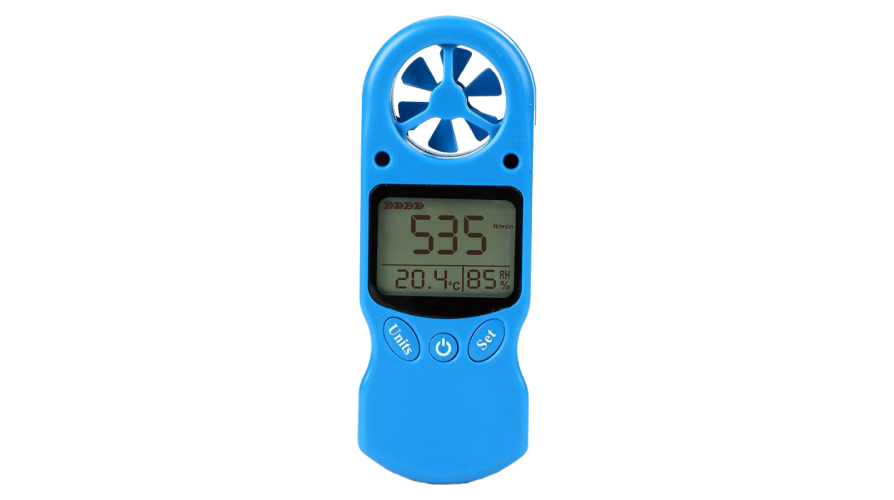Contrasting Digital and Mechanical Anemometers: Which is Right for You?
Contrasting Digital and Mechanical Anemometers: Which is Right for You?
Blog Article
Anemometers Revealed: Recognizing Their Importance in Environmental Monitoring and Precaution
The function of anemometers in environmental tracking and precaution is commonly undervalued, yet their relevance is indisputable. These tools have a long history rooted in scientific questions and technical innovations, advancing to end up being vital tools in various areas. From weather forecasting to air travel security, anemometers play a vital function in offering accurate information that educates decision-making procedures and improves general security. Understanding the details of anemometers reveals a world of crucial insights that are essential to our understanding of the environment and the actions we take to ensure safety and security.
History of Anemometers
The evolution of anemometers can be mapped back to the ancient people where rudimentary wind gauging gadgets were initial used. These very early wind measurement devices laid the structure for the advancement of more innovative anemometers over time. Among the earliest recognized anemometers was the hemispherical cup anemometer designed by Leon Battista Alberti in the 15th century. This design contained four hemispherical mugs that collected wind power, supplying a measurement of its strength based on the speed of turning.
Over the years, improvements in innovation led to the growth of even more modern anemometers, including ultrasonic anemometers and laser Doppler anemometers, offering increased precision and efficiency in measuring wind speed and direction. The background of anemometers showcases an impressive trip of innovation and progression in the area of weather forecasting.
Sorts Of Anemometers
Throughout the field of meteorology, numerous types of anemometers have actually been developed to properly determine wind speed and direction. Sonic anemometers use ultrasonic signals to determine wind speed and instructions precisely. Hot-wire anemometers operate based on the concept that the cooling impact of wind on a warmed cord is symmetrical to the wind speed.
Applications in Meteorology
Having actually discussed the numerous types of anemometers utilized in weather forecasting for gauging wind speed and direction, it is essential to explore their practical applications in the area. Anemometers play an essential role in meteorology by providing exact and real-time data on wind conditions (anemometer). Meteorologists use anemometers to monitor wind speed and direction to forecast weather patterns, issue warnings for extreme climate occasions like storms, tornadoes, and tornados, and evaluate atmospheric conditions for aeronautics safety and security
In meteorology, anemometers assist in understanding neighborhood and local wind patterns, which are essential for anticipating climate adjustments and identifying climatic patterns. These gadgets are likewise utilized in study to research microclimates, urban warmth islands, and air contamination dispersion. Additionally, anemometers are used in farming to maximize crop management techniques, such as watering and pesticide application, based upon wind problems.
Significance in Air Travel Safety
An integral aspect of ensuring aviation safety and security exists in the precise tracking of wind problems using anemometers. Anemometers play a vital function in air travel by offering real-time information on wind rate and instructions, assisting pilots in making educated choices during you could try here liftoff, touchdown, and flight. Solid and unpredictable winds can dramatically influence airplane procedures, making it necessary for aeronautics authorities to rely on exact wind dimensions to ensure the security of passengers and team.

In the dynamic environment of aviation, where also small modifications in wind speed and direction can have extensive effects, anemometers stand as essential devices for advertising protected and safe air travel.
Function in Environmental Research
Exactly how do anemometers add to advancements in ecological research study? Anemometers play an essential function in environmental study by offering crucial data on wind speed and instructions. This info is vital for comprehending various atmospheric processes, such as air pollution diffusion, weather patterns, and climate modification. By precisely gauging wind features, anemometers aid scientists assess the activity of pollutants airborne, analyze the effect of industrial exhausts, and anticipate the spread of pollutants in the environment.


Verdict
Finally, anemometers have actually played a vital function in environmental tracking and precaution. With an abundant background and various kinds readily available, these gadgets have explanation been extensively utilized in weather forecasting, aeronautics security, and environmental research. Recognizing the significance of anemometers is vital for precisely determining wind rate and instructions, which is essential for predicting weather condition patterns, ensuring risk-free aviation operations, and carrying out ecological researches - anemometer. Their payments to these areas can not be underestimated.
One of the earliest known anemometers was the hemispherical mug anemometer invented by Leon Battista Alberti in the 15th century. Over the years, developments in technology led to the development of even more modern anemometers, including ultrasonic anemometers and laser Doppler anemometers, offering enhanced accuracy and performance in measuring wind speed and direction. Hot-wire anemometers run based on the principle that the cooling effect of wind on a warmed wire is symmetrical to the wind speed. Meteorologists make use of anemometers to check wind rate and direction to forecast weather condition patterns, issue cautions for extreme weather condition events like storms, typhoons, and hurricanes, and analyze atmospheric problems for aviation security.
Comprehending the significance of anemometers is vital for properly determining wind rate and instructions, which is essential for predicting climate patterns, making certain secure air travel operations, and carrying out environmental researches. (anemometer)
Report this page